As the sun rises over the Andes, the pastel-colored buildings in Bellavista and Barrio Italia are illuminated by the rising sun as the city comes to life. People sip their morning mate before the busy capital city springs to life each day.
The social and cultural heart of Chile, Santiago is a city that captivates its visitors with its mix of old and new.
There are local working-class diners that haven’t changed for the better part of a century just down the street from hip new gastropubs. It has stately art-deco museums and the tallest skyscraper on the continent.
Both myself and Worldly Adventurer founder Steph spent many years living in Santiago, so it’s a destination about which we both have plenty of opinions and some brilliant suggestions for your trip.
One of the oldest cities in South America, Santiago was founded in 1541 as an administrative center and base of operations for what would become a centuries-long conflict with the native Mapuche people, who resisted the advance and subjugation of the Spanish conquistadors.
When Chile gained independence from Spain in the early 1800s, Santiago became its capital.
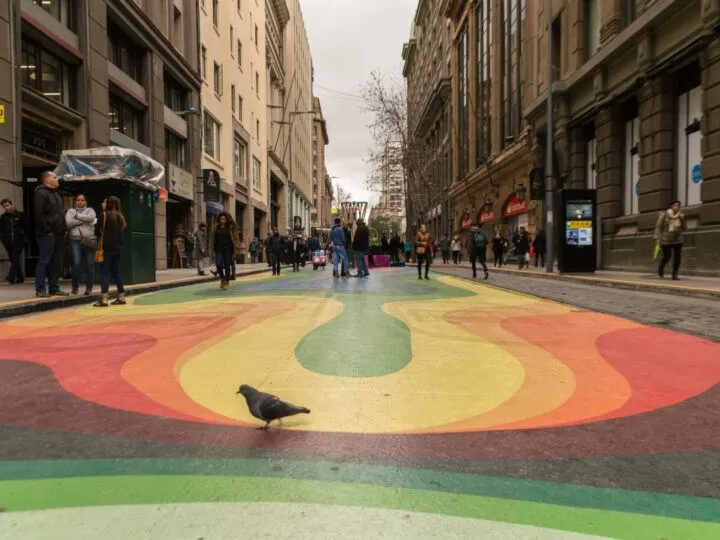
Geographically, the city sits in a basin between the coastal range to its west and the towering Andes Mountains to the east. Santiago has a climate similar to much of the Mediterranean, with warm, dry summers and cool, slightly humid winters.
2023 safety update: The US State Department has suggested “exercising increased caution” when visiting Santiago. This is due to an increase in muggings, assaults, and carjackings taking place in the city. Unlicensed taxi drivers are an increasing issue, too, particularly at the airport, so it’s recommended to always book through a registered provider (we recommend the reliable, English-speaking My Ride Chile). Previously safe tourist neighborhoods such as Bellavista and around the Plaza de Armas and the Central Market are becoming increasingly unsafe, and you’re best to visit them during the morning as things can take a turn later in the afternoon. It’s advised to take taxis (use Uber where possible or ask your accommodation to call a taxi; never hail a cab off the street) within these areas at nighttime. Read more safety recommendations here.
When choosing which month to plan your trip, consult our guide on when to visit Chile.
Although Santiago is a city of many faces, one thing is for certain: spend a few days in this exciting capital city is among the must-do things to experience in Chile. Whether you’re planning on visiting for a few days or a whole month, travelers will have an endless list of things to do in Santiago, Chile.
What’s there to do in Santiago?
1. Join a walking tour
A great starting point to acquaint yourself with the city is a walking tour. Many local tour companies operate well-organized tours led by well-informed, friendly guides.
A sightseeing tour will help you gain your bearings of the city center, fill you in on the city’s most important landmarks, and give you insight into local history, the large network of subway lines, and points of interest.
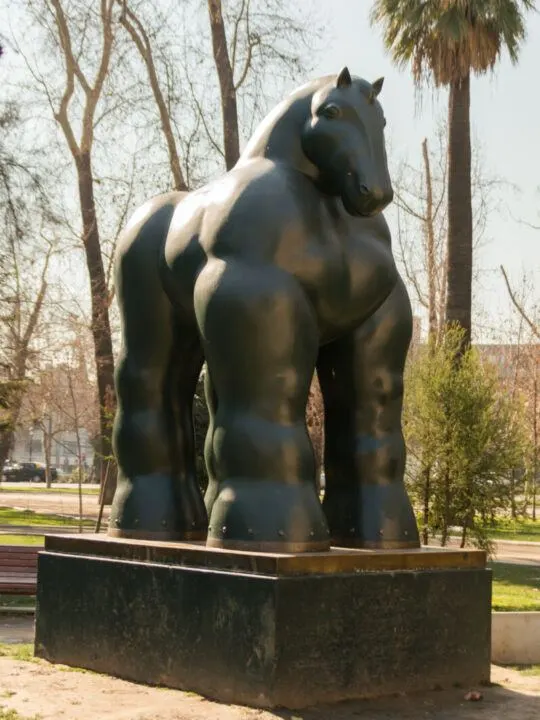
Walking tours are generally free of charge, but attendees are encouraged to tip their guides for their service. I recommend Strawberry Tours, whose personable guides offer four different itineraries or the option for customized Santiago Chile tours.
Most of these tours cover different areas of downtown Santiago, highlighting its impressive art-deco architecture.
Planning Your Trip to Chile?
Save time, stress & money with a customized travel itinerary planned for you by a Chile expert
2. Spend a morning at one of Santiago’s beautiful parks
When it comes to well-manicured parks, the capital city has them in spades. The largest and highest of them is the Parque Metropolitano (the Metropolitan Park), northeast of the city center. Among its attractions are two outdoor pool complexes, a botanical garden, an observatory, and the national zoo. The southwest end of the park is crowned by San Cristóbal, a hill that marks the city’s highest point.
The southern bank of the Mapocho River, which splits the city into north and south, has several kilometers of well-manicured parks, with walking trails under large shady trees, and packed with sculptures, murals, and public performance spaces.
Spending a few days in Santiago? Check out our guide to unforgettable day trips from Santiago for inspiration and tips for visiting the surrounding countryside, wineries and more.
3. Climb Santa Lucia Hill
In the central district of Lastarria lies Cerro Santa Lucía, a shining jewel in the midst of the city. While offering excellent views of the cityscape with the Andes beyond, the hill also boasts two 200-year-old fortresses, well-manicured gardens, and the neo-classical Fountain of Neptune at its southern base.
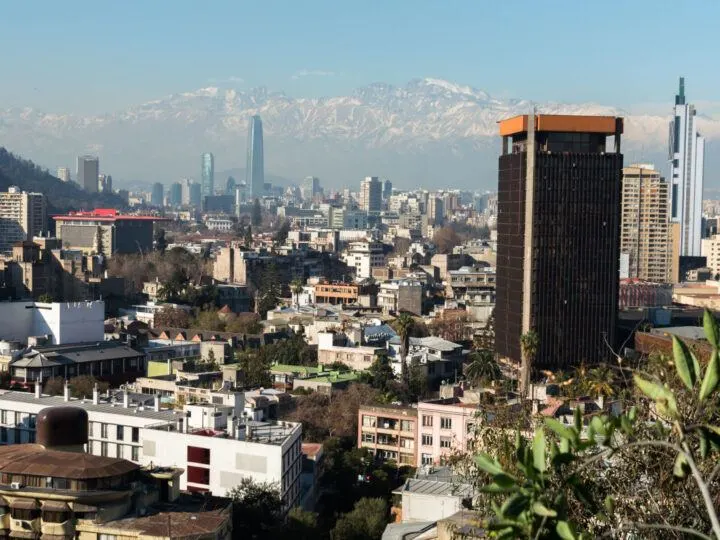
This is the historical heart of the city, and its first Spanish settlers clustered their homes around its base. It is a quintessential component of the history of Santiago.
4. Take in Santiago’s Plaza de Armas and adjacent Metropolitan Cathedral
All the best cities in Chile have a lovely central plaza, and the capital is no exception. Set in the middle of the frenetic business center of Santiago, the Plaza de Armas is itself a microcosm of the country’s rich cultural heritage.
Hawkers compete to sell snacks and souvenirs, old men play chess, and businesspeople spend their lunch break on a park bench. Towering palm trees provide shade above the large fountain and some of the best-sculpted statues of Santiago.
The plaza lies directly across the street from the impressive neo-classical Catedral Metropolitana (Metropolitan Cathedral), with its opulent frescoed ceilings, gold-leaf altar, and stained-glass windows.
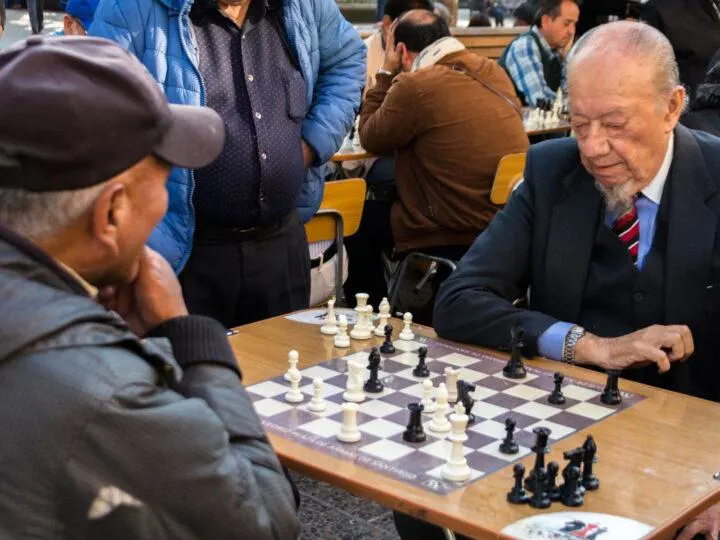
These two city blocks pack in two of the most significant landmarks in Santiago.
5. Seek out Santiago’s street art
Scattered throughout the city’s streets, Santiago’s street art demands the attention of locals and visitors alike. The city’s grafiteros showcase Santiago’s artistic character, one that does not necessarily confine itself to a museum. Its influence hails from every corner of the globe, demonstrating the city’s growing international flair.
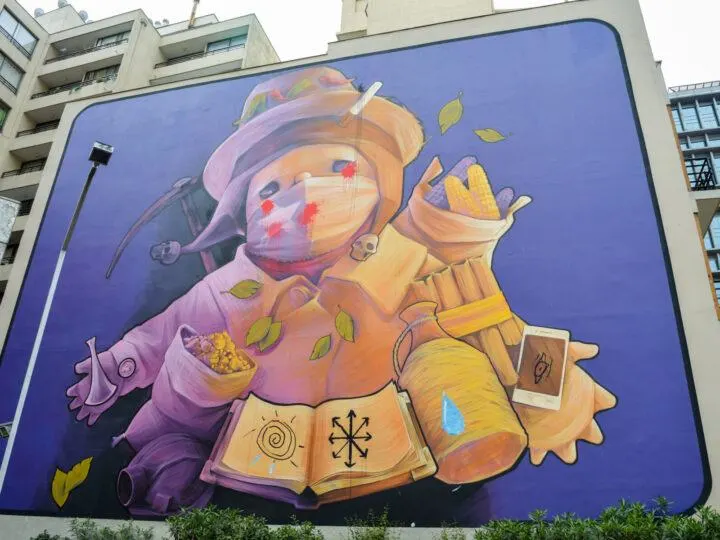
Well-known and newly created street art is fast becoming some of the most popular tourist attractions in Chile.
Works by INTI and Lord K2 have become world-famous, but hundreds of other artists demand attention for their groundbreaking visions painted, stenciled, or sprayed across the city.
They are among the best things to see in Chile and you find them throughout the city’s central neighborhoods, including Lastarria, Brasil, and Bellavista, as well as Paseo Bandera, an entire street in Downtown Santiago that has been pedestrianized and painted with art.
6. Make a morning visit to the Mercado Central
Santiago’s massive central market, the Mercado Central, is well-visited, and for good reason. Situated at the north end of downtown just south of the Mapocho River, this market is the long-standing, lively hub of city commerce.
Its seafood market is exceptional, as are its food stalls, serving up national specialties such as curanto, a hearty stew of seafood, meat, and potato typically eaten in Chiloé in the south.
Beyond the food, the central market is a great place to peruse all that Chile produces, from flowers to woolen textiles.
7. Visit one or all of the city’s world-class museums
When it comes to fine art, Santiago possesses an embarrassment of riches. For those without the time to visit them all, it is a difficult task to choose just one. These historical places are among the most famous buildings in Chile.
For those seeking insight into Chile’s tumultuous past half-century, head to the Museo de la Memoria y los Derechos Humanos (the Museum of Memory and Human Rights), which documents in detail the atrocities committed by the authoritarian regime of General Augusto Pinochet, only deposed in 1990. It’s a heartbreaking place to visit but one I certainly found helped me to better understand Chile and its people.
Just a block west is the Museo Nacional de Historia Natural (Museum of Natural History), astounding visitors with its collection of wildlife dioramas, as well as an entire whale skeleton. The museum is located in the idyllic Parque Quinta Normal (Quinta Normal Park) west of the center.
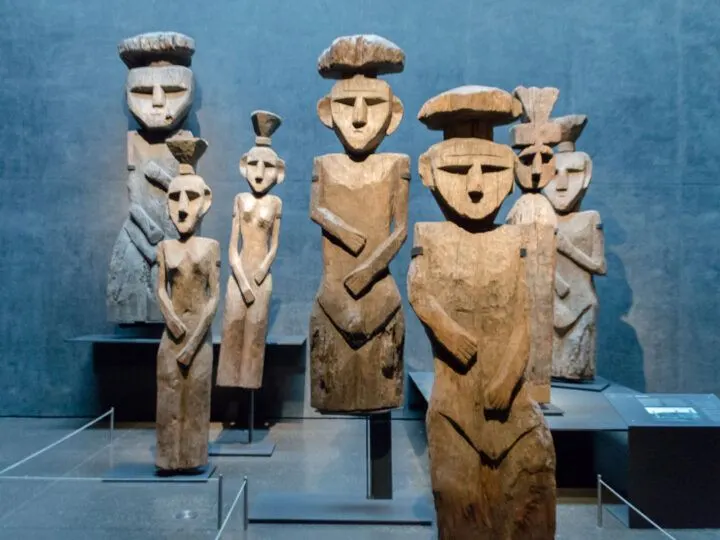
Two more of the best museums in Chile are the Museo Chileno de Arte Precolombino (Pre-Columbian Art Museum) and Museo Nacional de Bellas Artes (National Fine Arts Museum), a block southwest from the Plaza de Armas, and two blocks north of Santa Lucia Hill, respectively.
Each has an exquisite collection arguably unparalleled in South America [Steph’s note: I spent a whole afternoon wandering around the Pre-Columbian Art museum it’s that fascinating!].
8. Visit the Gabriela Mistral Cultural Centre
Of special note among the city’s museums is the Centro Gabriela Mistral (Gabriela Mistral Centre). More than an art museum, the venue hosts exhibitions, premieres, concerts, and theatre performances.
The center’s namesake was a world-renowned author, educator, humanist, and diplomat, who became the first Latin American writer to be awarded the Nobel Prize for Literature in 1945.
9. Spend some time in Barrio Italia
A bit southeast of the center, the upscale neighborhood of Barrio Italia is filled with lovely cafes, hip bars, and outstanding eateries. It’s also the antiques district, where you can browse to your heart’s content through bric-a-brac and restored furniture.
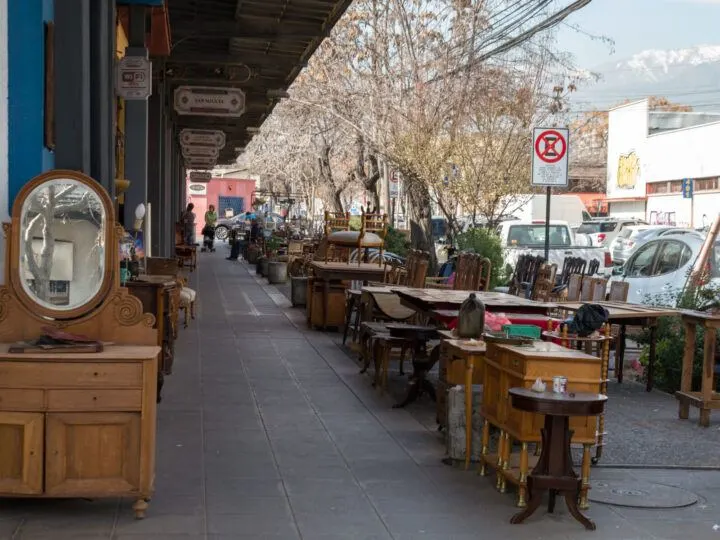
For good reason, Barrio Italia is arguably the best area to stay in Chile, with a full complement of accommodations from happening hostels to boutique hotels. For more info, check out our guide to where to stay in Santiago.
10. Eat lunch at a local Fuente de Soda
Literally a soda fountain, fuentes are old-school diners serving massive sandwiches and draft beer for those with a serious appetite. Most have linoleum floors, wood paneling, and walls adorned with kitsch and memorabilia. The service is brisk and the clientele is local.
One of my favorites is Martuca in Barrio Providencia, offering sandwiches piled high with your choice of meat, melted cheese, and veggies alongside an impressive assortment of local and international microbrews. Choose a stool at the bar or a table, order up, and step back in time.
11. Enjoy an exquisite dinner at Santiago’s top restaurant
On the other end of the dining spectrum is Chile’s most revered restaurant, Boragó. And what an experience it is. As Santiago’s dining scene becomes increasingly refined, its chefs are experimenting with local ingredients and flavor combinations on a new level.
Dinners at Boragó are an occasion to savor and have up to seven courses with optional wine pairings. Boragó stands atop the list of best restaurants in Santiago.
12. Do a proper pub crawl in Bellavista
In recent years, upscale gastropubs have proliferated in the Bellavista neighborhood just north of the river. Quality brewing was brought by German immigrants in the 19th century, reflected in the names of some of the best local breweries.
Among the best brewpubs in Santiago are Kunstmann Kneipe, Jardin Mallinkrodt, and KrossBar, each serving several varieties of schop, or draft, beer.
The food is excellent as well, featuring charcuterie boards and craft burgers, while more understated bars such as José Ramón 277 serve more low-key sandwiches and beers and are popular among young professionals and students alike. [Steph’s note: this was a favorite hangout of mine when I lived in Santiago!]
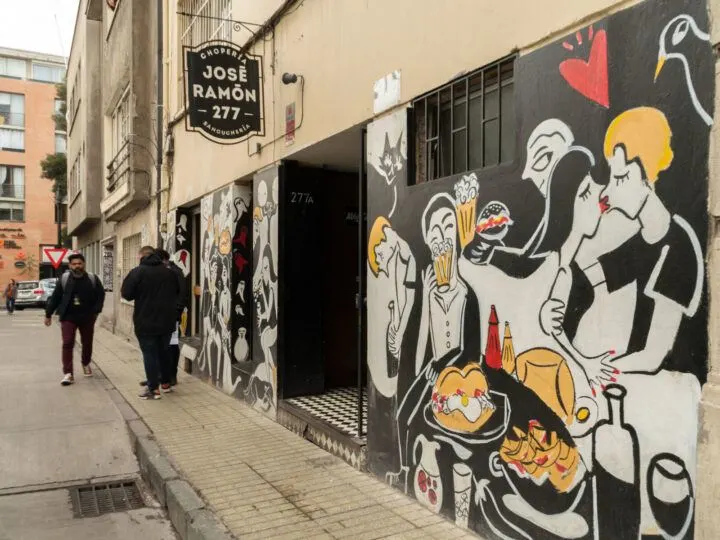
13. Take a deep dive into Santiago’s nightlife
The capital’s carrete, or party scene, is regionally renowned. Things get going late, as the local dinnertime isn’t until 10pm. If you show up to a bar or club before midnight looking to dance, you may be the only one out on the floor. But once things get going, they won’t stop until the sun is well up.
Many places are cafes and restaurants by day until the floor is cleared of tables and chairs to make room for the arriving pisco-fueled dance crowd later on.
Some popular spots include Bar Constitución and Havana Club in Recoleta for electronic/reggaetón, and salsa/merengue, respectively, Club de Jazz in La Reina, and La Peña del Nano Parra, also in Recoleta, for an eclectic mix of live local music.
14. Survey the surrounding region at the Costanera Center
No matter where you are in the greater metropolitan area, you will be within sight of South America’s tallest building, the Costanera Center Tower. From the 62nd story, the view of the sprawling city and the snow-covered Andes is dramatic indeed. Nearly all of Santiago’s points of interest are within view.
250 meters below is South America’s largest and most modern shopping mall. If you need something you’ve left at home or need to stock up on provisions, you’re sure to find what you’re after in this six-story shopping mecca.
15. Join in the celebrations at the Santiago a Mil Festival
Every January, the capital hosts one of the top summer events in the country, the Santiago a Mil Festival. For three weeks, entertainers from around the world congregate to put on world-class music, theatre, and dance performances, many of which are free of charge.
The whole city pours into the streets as the festival runs day and night across the capital, making this one of the can’t-miss activities in Santiago. Check out the official website for the full rundown of events.
16. Absorb the cityscape from the striking Bahá’í de Sudamérica temple
High above the city lies one of Santiago’s most picturesque feats of architecture. The Bahá’í de Sudamérica temple looks like an upside flower waiting to unfurl and is a place of worship belonging to the Bahá’í faith and has won dozens of awards for its intriguing design.
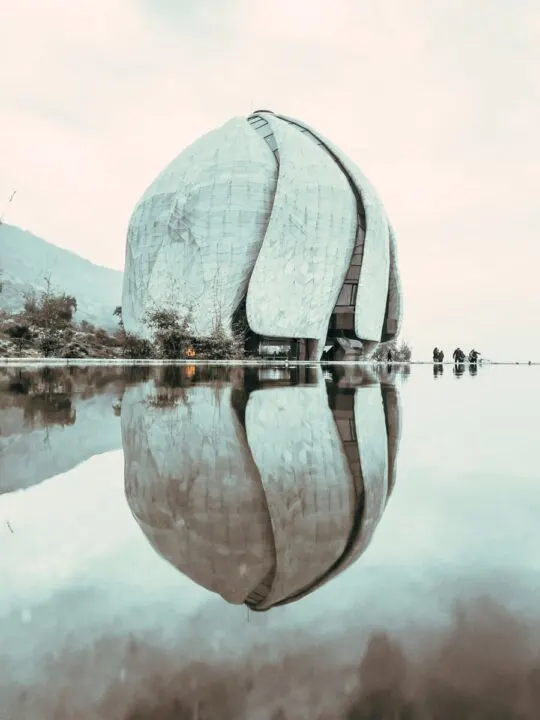
Regardless of your faith – or lack of it – the temple is a truly beautiful building and, thanks to its location, promises sensational views of Santiago below. The easiest way to visit is by taking Line Four (the blue line) from Tobalaba to Grecia and getting a taxi up to the temple.
17. Explore the city by metro
Another must-do is a city metro tour of Santiago’s expansive network. Fares are quite affordable by Western standards and most destinations of significance are within a short walk of a station.
Rechargable and refundable Bip! Metro Cards are available to purchase at all stations. Fares start at $640 or $700 CLP ($0.80-0.90 US), depending on the time of day.
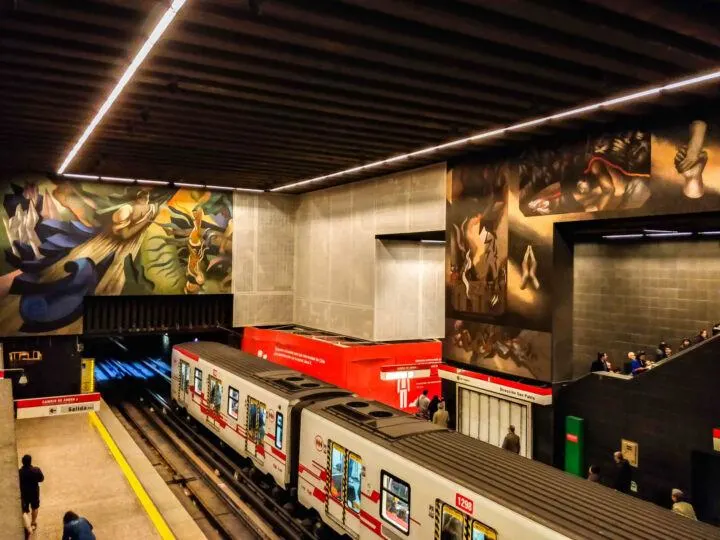
A number of the metro stations are wonderfully designed, and a tour of them makes a good daytime activity with a camera. The stations at Pedro de Valdivia, Los Leones, and Parque Almagro are particularly eye-catching [Steph’s note – these are seriously cool and something you often won’t notice unless you look up!].
18. Ride a bicycle around the city
While I encourage everyone to see the city on foot, it’s easy to cover more ground on a bike. Since 2019, Santiago has had FIT bikes located around the city. They’re easy to use and can be found next to metro stations and parks.
A great route to cycle is along the Mapocho River, from Las Condes in the northeast to Parque de la Familia in the west. In between you’ll pass through the lovely Parque Balmaceda, Parque Forestal, and Parque de los Reyes.
Alternatively, you can join a bike tour for a guided excursion around Santiago. La Bicicleta Verde offers a number of tours, including ones to local markets or an all-day ride, as well as the option to customize your own tour.
19. Meet Chile’s most important figures at the General Cemetery
Some may consider it a bit macabre, but a visit to Chile’s largest and most important cemetery offers a who’s who of many of the country’s important historical figures.
Here you’ll find stately mausoleums and tombs dating back to the first half of the 19th century and shaded by giant palm trees.
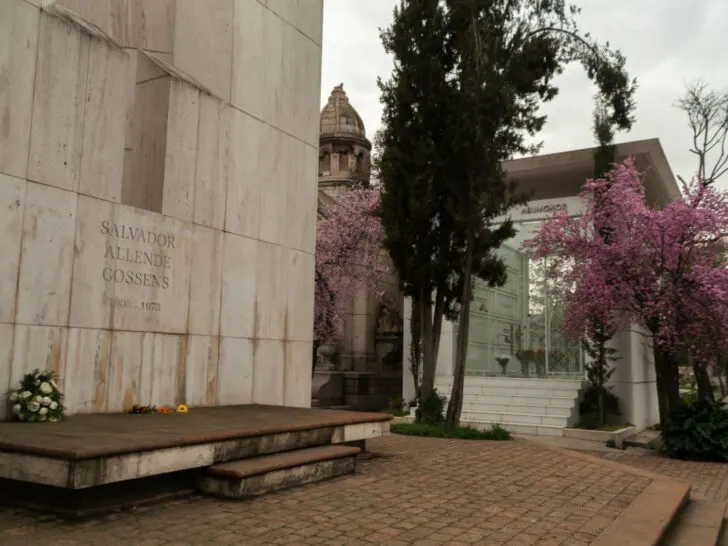
Founded shortly after independence in 1821 by Bernardo O’Higgins, Chile’s founding father, the Cementerio General (General Cemetery) is the final resting place for nearly all Chile’s ex-presidents and many influential writers and artists.
The most visited mausoleum is that of former president Salvador Allende, who was ousted by the dictator Augusto Pinochet.
20. Pay a visit to Pablo Neruda’s home in Santiago
Chile’s famous Nobel laureate author, Pablo Neruda, maintained three residences, including La Chascona in the Bellavista neighborhood of Santiago (the others are in Valparaíso and Isla Negra, with the latter being my favorite to visit).
Vandalized in the upheaval following Pinochet’s coup in 1973 (Neruda died controversially the same year), La Chascona has been lovingly restored to how it was during the author’s life.
The property is located at the foot of Saint Cristobal Mountain and well worth a visit; La Sebastiana, his property in Valparaíso, is one of our most recommended things to do in the city.
21. Ride the funicular and cable car up San Cristóbal
Right around the corner from La Chascona, the funicular is the quickest and most scenic way to ascend San Cristóbal, a hill that towers above the neighborhood of Bellavista and forms part of the vast Parque Metropolitano.
The funicular takes you from city level a steep, 1,591 feet (485 meters); from there, a cable car carries you to the summit.
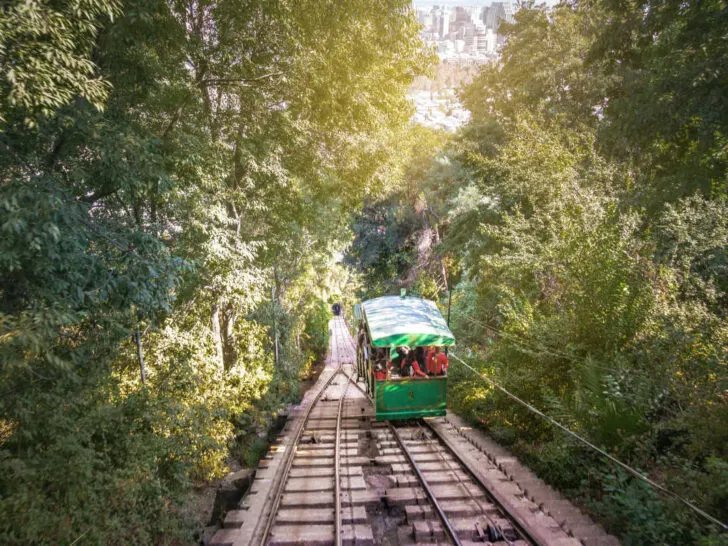
A full-day ticket covering funicular, cable car, and buses on top of the mountain costs $7,900 CLP ($10 US).
Riding the funicular boasts great views of Bellavista and the city center, and the cable car offers views of the better part of the metro area, as well as the surrounding mountains.
22. Take a dip in the Tupahue swimming pool
If visiting in the warmer months (November through April), beat the heat at the city’s best outdoor pool. Adjacent to the cable car station on San Cristobal, Piscina Tupahue is the perfect activity for a hot sunny day.
Admission is $7,000 CLP ($9 USD), and visitors can swim, sunbathe, and enjoy panoramic views of the city below from Tuesdays to Sundays, 9am to 6pm.
23. Stroll around the city’s botanical garden
A few minutes walk from the Tupahue swimming pool is the city’s foremost botanical garden, Jardín Mapulemu.
Translated from the native Mapudungún language as ‘forest of the earth’, the garden features a fine assortment of flora found around Chile, in particular, plants with medicinal properties.
It’s also a lovely spot for a picnic or reading a book, with plenty of shady spots and views of the Costanera Center and distant Andes south and eastward. The park is open from 9am until sundown.
24. Tour Palacio de La Moneda, Chile’s White House
Palacio de La Moneda, Chile’s presidential mansion, originated as a mint house at the end of the 18th century for the Spanish crown.
Only one president has actually resided in La Moneda, but it remains a symbolic building due to its role in the 1973 coup when military aircraft bombed the building on the orders of the four leaders of the armed forces, including General Augusto Pinochet.
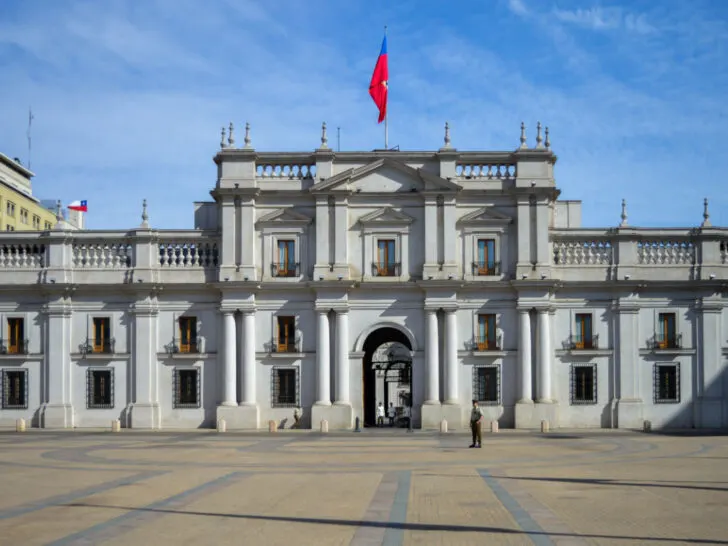
The neo-classical structure is situated at the end of Paseo Bulnes, the pedestrianized thoroughfare running north from Parque Almagro.
Tours (1.5 hours, 3pm and 4.30pm Mon.-Thurs., 3pm Fri.) are free, however, you’ll need to book at least a week in advance to secure a spot. I never did this when I lived in Santiago, but this building offers a true look into a very significant slice of Chilean history.
25. Sample Chile’s finest wines
Although many travelers visit Chile’s excellent vineyards located further afield, visitors who would rather remain in Santiago have some great options as well.
Accessible via the metro (Línea 5; metro stop Rodrigo de Araya) is the brilliant Viña Santa Carolina, which was founded in 1875 and whose vineyards remained within the city limits until the 1970s.
Tours and a wine shop are available to visitors and I really enjoyed poking around the wine cellar (before stopping in the shop for a bottle of their signature cabernet sauvignon).
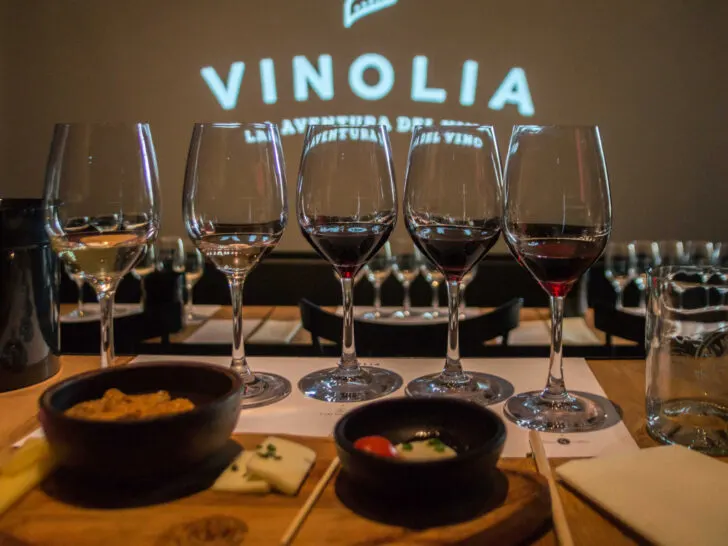
Alternatively, why not do it yourself and have a picnic in one of the city’s parks? The English-speaking staff at Santiago Wine Club will gladly recommend wine and food pairings (cheese, patê, smoked salmon, and meat) for your own personalized tasting.
You can also head over to Vinolia, an innovative restaurant offering virtual tours of various vineyards around Chile, with tastings guided by the winemakers themselves.
26. Learn about Chilean food while taking a cooking class
While Chile’s gastronomy shares some characteristics with its neighbors, as well as with Spain, Italy, and Germany, it has a number of dishes and flavors all its own.
From fresh seafood and hearty casseroles to family-style roasts and crispy baked empanadas, Chile specializes in filling, no-frills dishes using local ingredients.
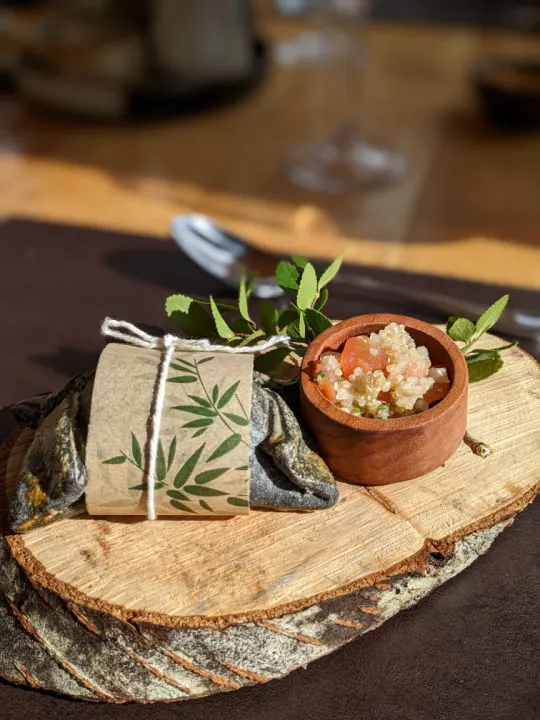
With Chile Cooks, you’ll have the opportunity to make local food from scratch, including pastel de choclo, empanadas de pino, and mote con huesillo. First, you’ll head to the central market to pick out the ingredients before returning to the kitchen to prepare each dish.
To learn more about the country’s culinary offerings, check out my guide to Chile’s most famous dishes.
27. Taste authentic flavors at traditional Chilean restaurants
For a deeper dive into traditional Chilean dining, Santiago is home to a number of restaurants serving dishes that have hardly changed over the past few centuries. Many of these recipes hail straight from the farms, mountains, forests, and islands that make Chile such a diverse country.
Two places worth seeking out are Restaurant Ana Maria, which serves traditional family-style cooking, and Chiloeentumesa, which specializes in dishes from Chiloé Island in the south of the country.
For more on the city’s culinary scene, check out our guide to the best restaurants in Santiago.
28. Taste and learn about pisco, Chile’s national spirit
A source of contention with Peru, Chile’s neighbor to the north, is that both countries claim to be the birthplace of pisco, a grape distillate similar to strong brandy.
Whichever can truly lay claim to this title, it’s fair to say that pisco fuels Santiago’s nightlife, whether it’s mixed with red wine or cola, or drunk straight.
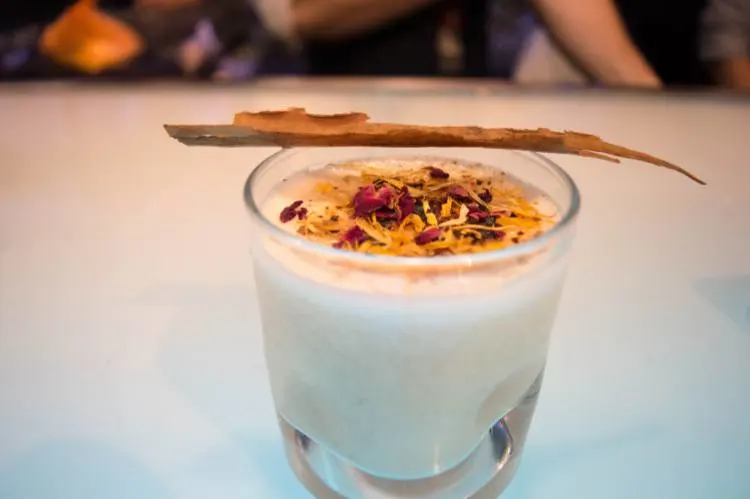
The perfect place to familiarize yourself with Chilean pisco is Chipe Libre in Bellas Artes district. Here, the bartenders can walk you through the production process, and recommend a bottle or cocktail. Don’t miss the quintessentially Chilean ceviche and other seafood options to go along with your drinks.
29. Visit the National Stadium
Santiago’s Estadio Nacional is well-known for a couple reasons. First, it has served as the top venue for the national soccer team since 1938 and the popular Universidad de Chile club team.
Second, it was notorious as the detention center where Pinochet’s regime imprisoned and tortured political dissidents.
Whether you’re visiting for a soccer match or for a glimpse into a dark chapter of history, the national stadium is an integral experience for understanding the past and present.
For tickets to a soccer match, go to Universidad de Chile’s website to book in advance.
30. Check out the Lollapalooza Festival
Every March, Santiago is host to Chile’s version of Lollapalooza, the Chicago-based music festival, featuring headliners from around the world on several stages. The music is usually rock and hip-hop, but plenty of other genres are represented.
The festival runs from Friday through Sunday in late March, and is located in the massive O’Higgins Park, just southwest from the city center. Tickets can be bought for single days or an all-weekend pass.
31. Take a day trip from the city
While Santiago has more than enough to keep visitors busy for a few days, there are plentiful opportunities for adventure nearby.
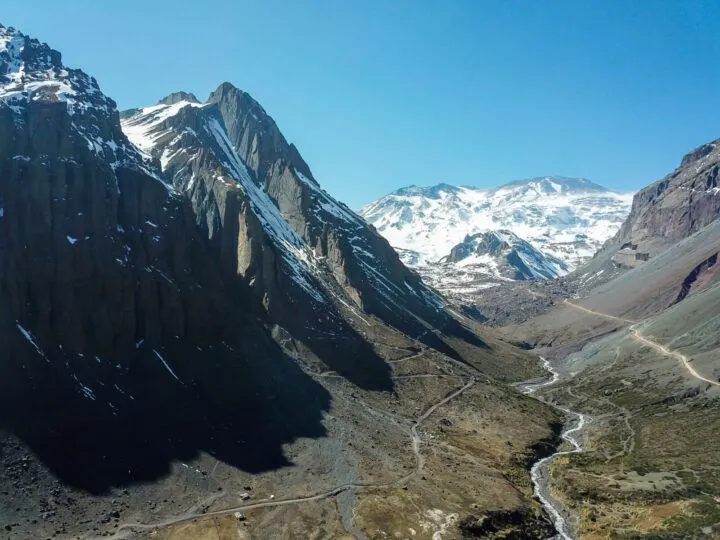
Among the highlights within range of the capital are the neighboring coastal cities of Valparaiso and Viña del Mar, vineyards in the Casablanca, San Antonio, and Maipo valleys, and the gorgeous Cajón del Maipo valley to the southeast. Don’t miss my guide to unforgettable day trips from Santiago for more information.
Where is Santiago and how can you get there?
Chile’s capital sits in the center of the country, 116km east of the port city Valparaíso. While Chile is a far-flung destination for most, Santiago is well-connected, with direct flights to major cities in North America, Europe, Australia, and many cities in South America.
Travel within Chile from Santiago is convenient and affordable, particularly via plane and bus.
Getting around Santiago
Santiago has South America’s largest metro system and an extensive bus network. Fares start at $720 CLP (around $0.88 USD) and allow free transfers to other metro lines and buses within a two-hour time window. Metro hours are 7:00-23:00 Monday through Saturday and stop an hour earlier on Sundays.
Taxis are an affordable option for getting around as well. Some taxis are metered while others are not. For unmetered cabs, always agree on a fare before getting in.
If you’d rather not take a local taxi, Uber operates in Santiago, but since it operates in a legal grey area the driver will likely ask one passenger to sit up front to hide the fact that it’s an Uber and therefore to avoid being stopped by the police.
For traveling to and from the airport, taxis are the easiest option and will run between $15.000-$20.000 COP to or from the city center; book in advance using My Ride Chile. Alternatively, there is a convenient bus service operated by TurBus for $1,900 COP one-way or $3,400 COP return to the Central Train Station, which has a metro station.
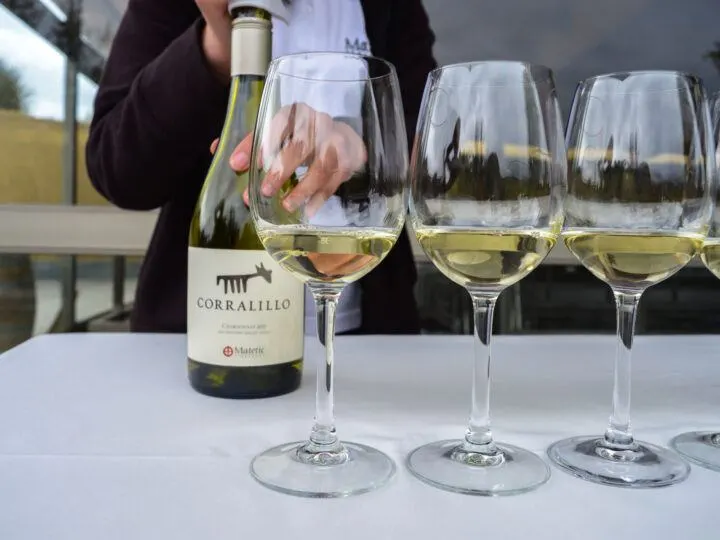
What day trips can you do from Santiago?
While there are many things to do in Santiago, Chile, there are a number of worthwhile activities to be undertaken nearby the capital. Just a two-hour bus ride west is Valparaíso, a city offering a change of pace and bursting with character.
While doable on a day trip, it makes an excellent weekend (or weeklong) getaway as well – find out what to do there with our guide to the best things to do in Valparaíso.
Between the two cities lies some excellent wine country with plentiful vineyards from which to choose. Emiliana, one of Chile’s foremost organic wineries, offers outstanding tours, tastings, and winemaking workshops, while Matetic is a boutique biodynamic winery with delicious with a fine restaurant and extremely high-quality wines. Find out how to visit independently by reading the article about Valparaíso above.
If a winter getaway is more your thing, the world-class ski resorts of Farellones and Valle Nevado are within an hour and a half drive.
Read our complete guide to Santiago day trips and, for a broader look at places to visit in Chile, have a look at our comprehensive practical and regional guides to the country.

Is Santiago safe?
Yes, Santiago is safe for visitors who follow common sense. Like most destinations, you would be advised to exercise discretion with phones and valuables and mind where you walk late at night. The city’s shadier districts are generally further from the center. If leaving a bar or club at night, it is recommended that your taxi or Uber directly home to avoid being a target.
Finally, if the whole process of planning a trip halfway around the world seems daunting, why not let someone who’s spent extended time there lend a hand? I can plan you a trip to ensure peace of mind and an unforgettable adventure in Santiago.
